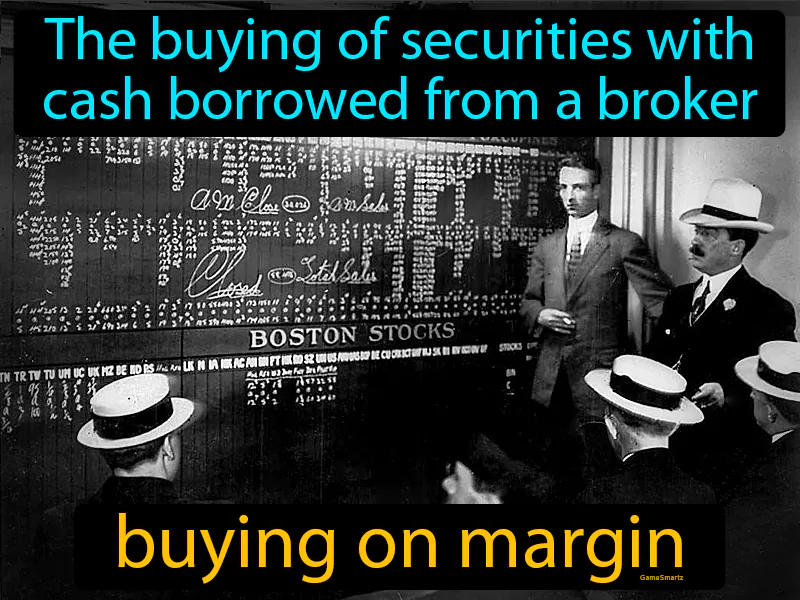Buying On Margin
Buying On Margin: Easy to understand
In the 1920s, buying on margin allowed people to purchase stocks by only paying a small percentage upfront and borrowing the rest from brokers. This practice contributed to the booming economy, as it made it easier for many people to invest in the stock market, driving stock prices up. However, it also created a risky financial environment, leading to the eventual stock market crash in 1929 and the Great Depression. Today, buying on margin is still used in the stock market, but with stricter regulations to prevent similar economic disasters. For example, if someone buys stocks on margin and the stock's value drops significantly, they might owe more money than they initially invested, which could lead to financial difficulties.

Practice Version

Buying On Margin: The buying of securities with cash borrowed from a broker. Buying on margin. In the 1920s, buying on margin was popular, contributing to the stock market crash of 1929 when people couldn't repay their loans.